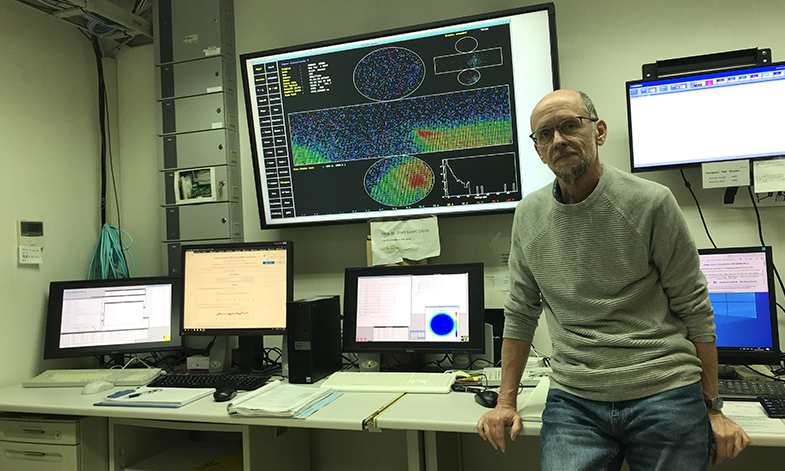Apr 17 2020
At the University of Sheffield, physicists have made efforts to gain insights into why the universe is composed of mainly matter and not antimatter, by investigating the difference between the two.
 Professor Lee Thompson in the control room of the SuperKamiokande detector. Image Credit: University of Sheffield.
Professor Lee Thompson in the control room of the SuperKamiokande detector. Image Credit: University of Sheffield.
Results of the T2K experiment, a large international partnership of over 350 researchers, which includes a team from Sheffield, UK, point toward variations in the fundamental behavior of neutrinos—elusive elementary particles—and of antineutrinos, their antimatter equivalents.
The study, which was reported in the Nature journal, is a huge leap forward in the analysis of the difference between matter and antimatter. It could help gain further insights into why the universe is mostly composed of matter and not equal parts of matter and antimatter.
The SuperKamiokande detector was used by the T2K Collaboration to observe neutrinos and antineutrinos that were produced 295 km away at the Japanese Proton Accelerator Research Complex (J-PARC).
When these particles travel through the Earth, they oscillate between various physical properties called flavors. The T2K collaboration discovered a discrepancy in the way neutrinos and antineutrinos oscillate. They achieved this by recording the numbers that reach SuperKamiokande with a different flavor than the one they had been produced with.
The difference in the behavior between neutrinos and antineutrinos occurs due to the asymmetry in their physical properties, named charge-conjugation and parity reversal (CP) violation. By measuring this asymmetry, researchers can gain insights into the origin of the existing prevalence of matter over antimatter in the universe.
Astronomers find that the matter in the universe is overwhelmingly just that: matter, with positively charged atomic nuclei surrounded by negative electrons. When particle physicists make new particles in accelerators, they always find that they produce particle-antiparticle pairs: for every negative electron, a positively charged positron. So why isn’t the universe 50 per cent antimatter? This is a long-standing problem in cosmology—what happened to the antimatter?
Lee Thompson, Professor, Department of Physics and Astronomy, University of Sheffield
Thompson added, “This work brings together particle physics and cosmology—by studying neutrinos, the most elusive of the elementary particles, we learn something about the largest of astrophysical topics, the universe itself.”
The team from Sheffield included Professor Lee Thompson, Dr Susan Cartwright, Dr Matthew Malek, and postdoctoral researchers and PhD students from the University of Sheffield’s Department of Physics and Astronomy.
The measurements made as part of the experiment support earlier observations and open the door for future discoveries. A new wave of experiments under progress, which involves a group of particle physicists at Sheffield, might offer a solution to the riddle of missing antimatter in the coming decade.